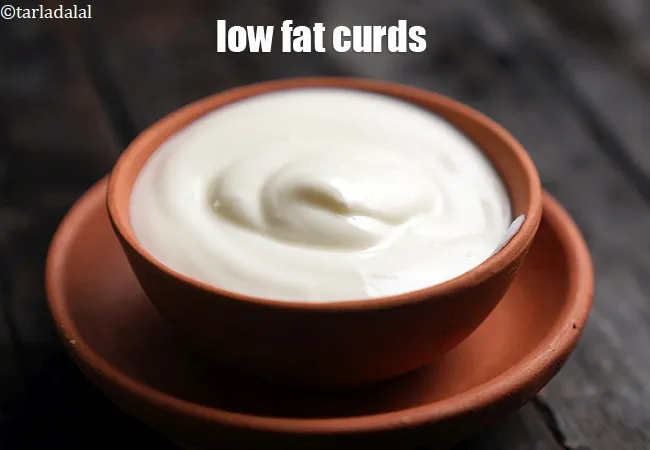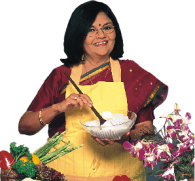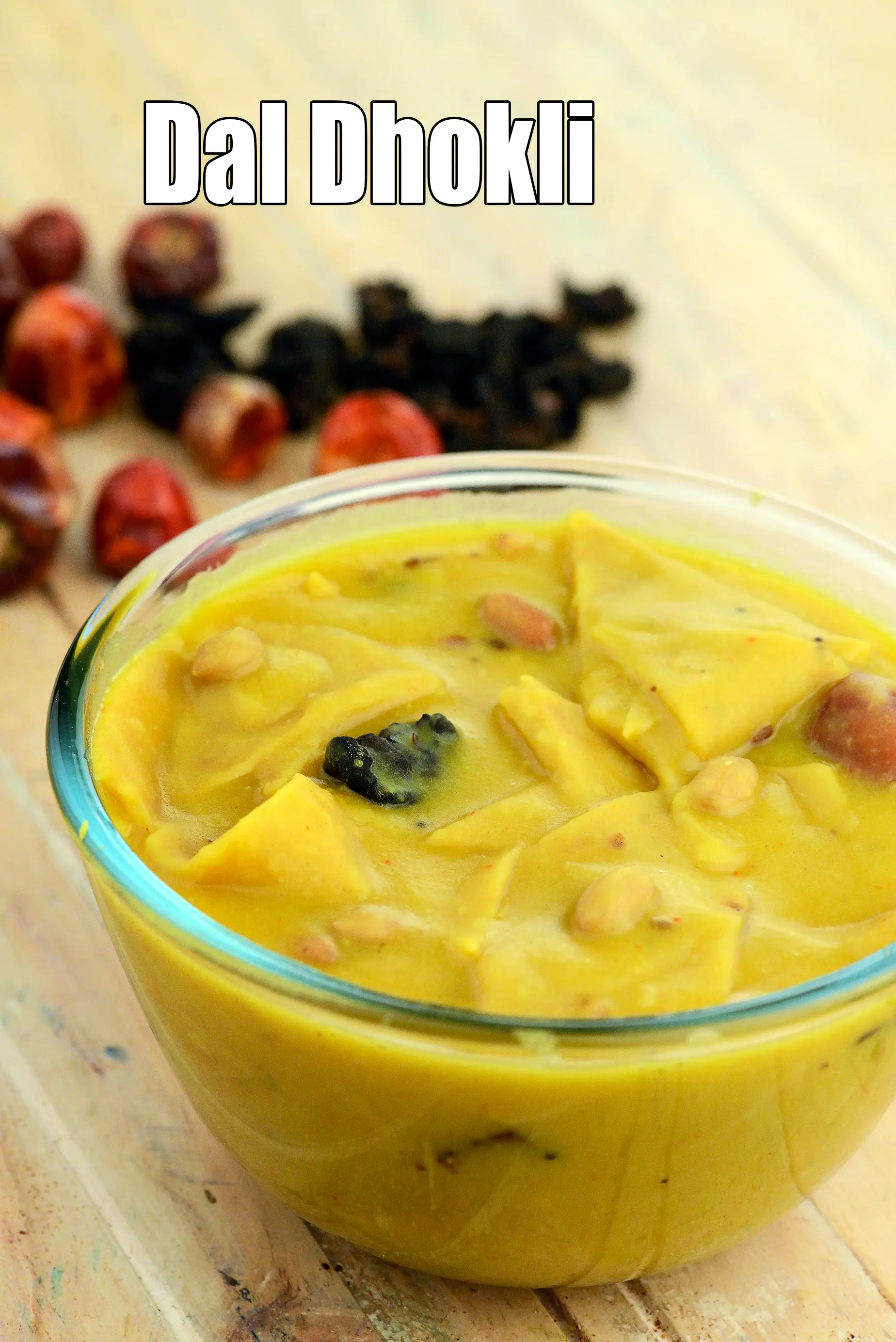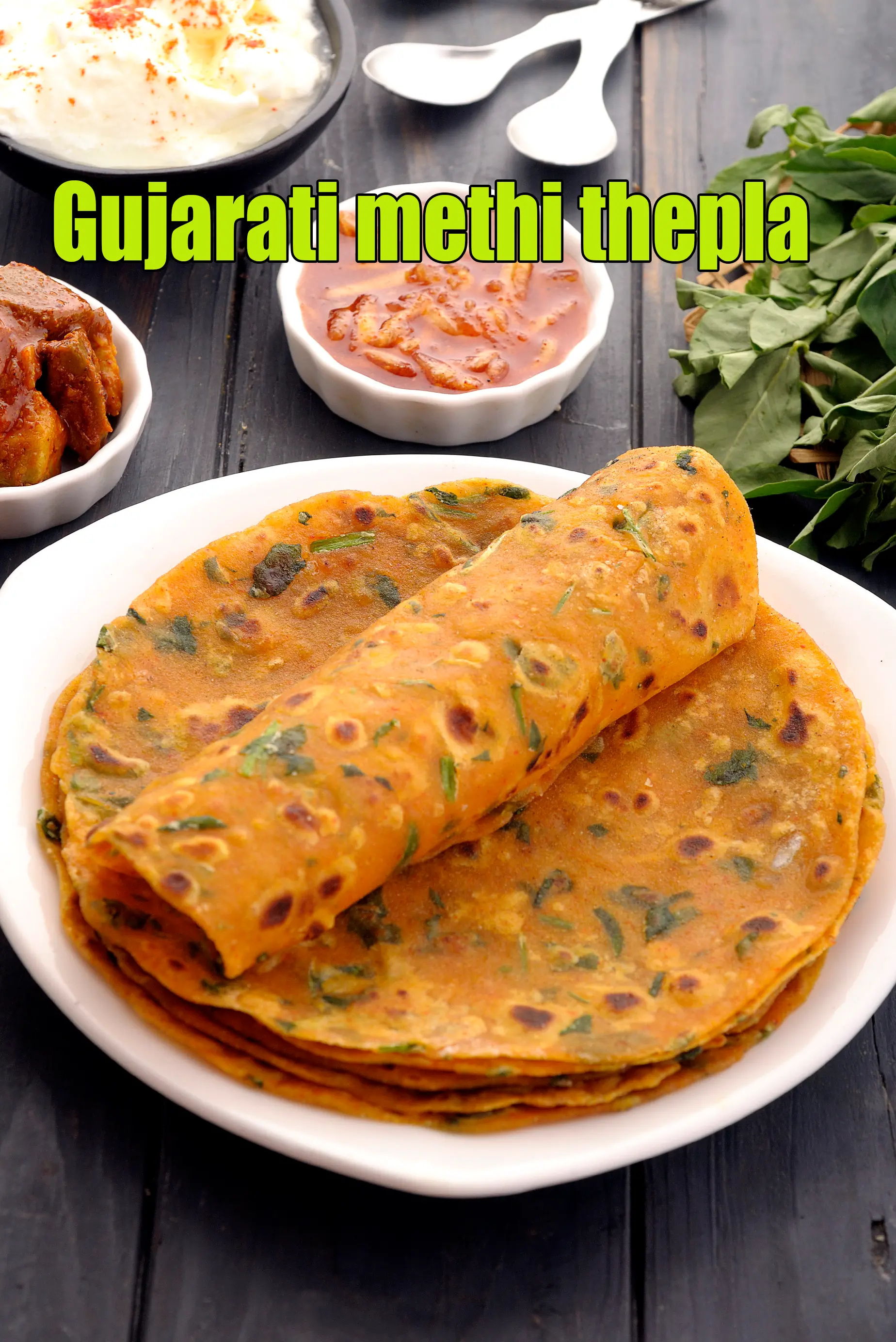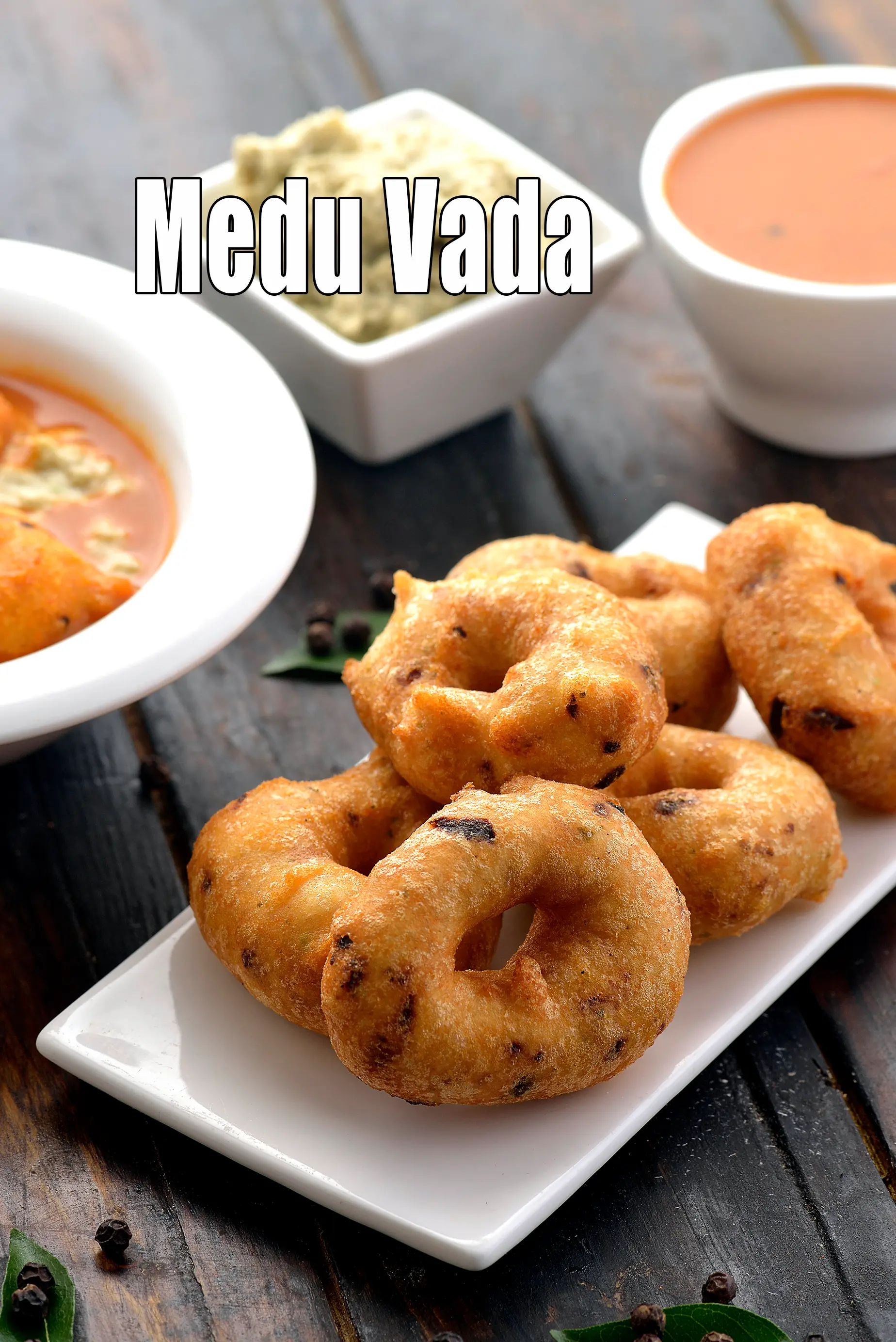Nutritional Facts of Fada Ni Khichdi ( Gujarati Recipe), Calories in Fada Ni Khichdi ( Gujarati Recipe)
This calorie page has been viewed 12965 times
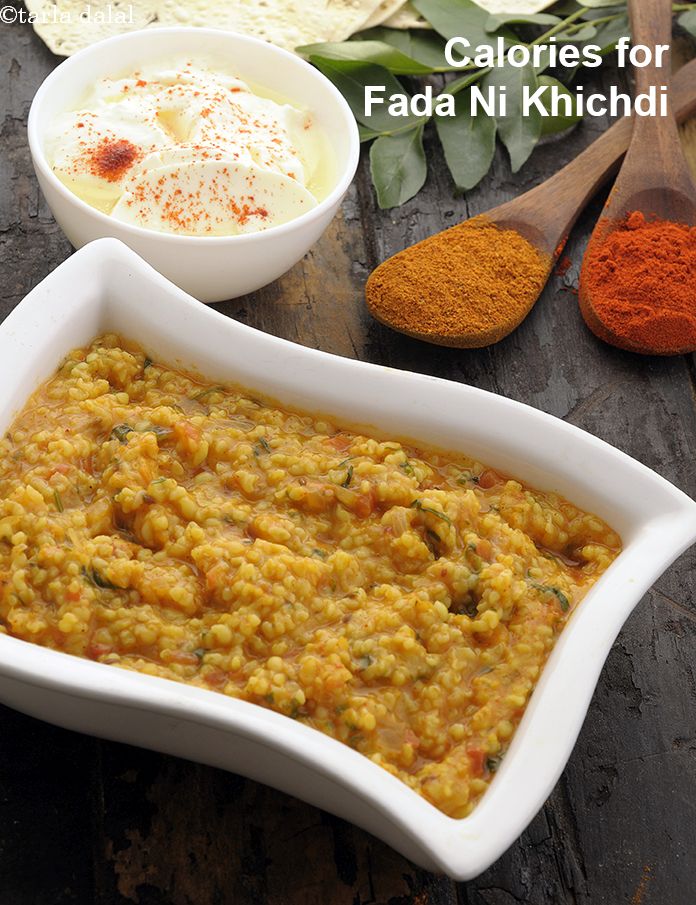
Table of Content
How many calories does one serving of Fada Ni Khichdi have?
One serving of Fada Ni Khichdi gives 208 calories. Out of which carbohydrates comprise 116 calories, proteins account for 17 calories and remaining calories come from fat which is 73 calories. One serving of Fada Ni Khichdi provides about 10 percent of the total daily calorie requirement of a standard adult diet of 2,000 calories.
208 calories for 1 serving of Fada Ni Khichdi (Gujarati Recipe), Cholesterol 0 mg, Carbohydrates 29.1g, Protein 4.6g, Fat 8.1 g. Find how much fibre, iron, calcium, zinc, magnesium, phosphorus, sodium, potassium, folic acid is present in Fada Ni Khichdi (Gujarati Recipe)
Click here to view. Fada Ni Khichdi recipe. We have got you a perfect, healthy and tummy filling khichdi recipe "fada ni khichdi". Fada translates to broken wheat, lapsi, dalia or bulgar wheat. We have used the very nutritive and healthy dalia as the main ingredients which makes the fada ni khichdi super nutritive too.
Think comfort food, and broken wheat khichdi is one of the first option that comes to mind. Easy to make, a one pot dish dinner, and a one dish meal , the Gujarati style fada in khichdi is the epitome of convenience. Breakfast, brunch, supper or dinner, if you want a simple meal in a hurry, look no further than the humble dalia khichdi.
Khichdi is usually made with a combination of grains and dals, cooked till soft and mushy, just a little thicker than porridge. This makes it comforting to the palate and easy to digest too. Most commonly, khichdi is made of rice and moong dal.
The method to make fada ni khichdi is super quick and easy, it is as simple as any other khichdi recipe and can be easily cooked even by a learner. To make fada ni khichdi, combine the fada, yellow moong dal, turmeric powder, little salt and 3 cups of water in a pressure cooker, mix well and pressure cook for 3 whistles. Allow the steam to escape before opening the lid. Heat the oil in a deep non-stick pan, add the cumin seeds and curry leaves and sauté on a medium flame for 30 seconds. Add the garlic paste, ginger paste and onions and sauté on a medium flame for 2 minutes. Add the tomatoes and 1 tbsp of water, mix well and cook on a medium flame for 2 minutes, while stirring occasionally. Add the chilli powder and pav bhaji masala, mix well and cook on a medium flame for 1 minute. Add the cooked fada- moong dal mixture, 1½ cups of water and salt, mix well and cook on a medium flame for 2 minutes, while stirring occasionally. Add the coriander and lemon juice and mix well. Serve Gujarati style fada ni khichdi hot with curds.
Fada ni khichdi made with broken wheat and yellow moong dal simmered with vegetables and spices, this dish is quite wholesome and does not even require any grand accompaniments. Just serve with plain or masala curd, to make a delectable meal. I prefer relishing this wholesome khichdi with Gujarati kadhi, it is a treat!!
Is Fada Ni Khichdi healthy?
Yes, this is healthy. But restrictions apply to some.
Let's understand the Ingredients.
What's good.
1. Dalia ( Broken Wheat, Bulgar Wheat) : High Fibre in dalia aids in managing Diabetes. The high fiber further assists in controlling the levels of cholesterol too, thus reducing the risk of strokes. Strong Bones are the backbone of our body. We are aware that with age our bone mineral density decreases and we need a good dose of calcium, phosphorus and magnesium to maintain the health of our bones and dalia provides that. See here for detailed 8 amazing benefits of dalia.
2. Yellow Moong Dal : The fibre (4.1 g in ¼ cup) present in yellow moong dal prevents the deposition of bad cholesterol (LDL) in the arteries which promotes a healthy heart in turn. Packed with nutrients like zinc (1.4 mg), protein (12.2 mg) and iron (1.95 mg), yellow moong dal helps to maintain the elasticity of your skin and help to keep it moist. Fiber, potassium and magnesium from yellow moong dal will work together to regulate blood pressure and soothe the nerves and is diabetic friendly. See here for details of 7 amazing benefits of yellow moong dal.
3. Onions (pyaz, kanda) : Raw onions are a very valuable source of vitamin C – the immune building vitamin. Along with other phytonutrients from onions, it helps to build WBC (white blood cells) which serves as a line of defence against illness. Yes, it’s a source of many antioxidants, the most important one amongst them being Quercetin. The quercetin which promotes production of HDL (good cholesterol) and lowers total cholesterol in the body. The sulphur in onions act as a blood thinner and prevents blood clotting too. This in turn would lower blood pressure and good for heart, diabetics. Read the benefits of onions.
4. Green Peas : Green peas are good for weight loss, good source of vegetarian protein, has insoluble fibre to relieve constipation. Legumes like green peas, cow peas, mung, chick peas and kidney beans have a cholesterol lowering effect. Green Peas are rich in Vitamin K which aids in bone metabolism. Is green peas good for diabetics and see full benefits of green peas.
Can diabetics, heart patients and over weight individuals have Fada ni Khichdi ?
Yes, but control portion size, reduce the quantity of ghee. High Fibre in dalia aids in managing Diabetes and further assists in controlling the levels of cholesterol too, thus reducing the risk of strokes.
Fiber, potassium and magnesium from yellow moong dal will work together to regulate blood pressure and soothe the nerves and is diabetic friendly. Legumes like green peas, cow peas, mung, chick peas and kidney beans have a cholesterol lowering effect. What's also good about this recipe is that it has a mix of vegetables and dal.
Can healthy individuals have Fada ni Khichdi ?
Yes.
What is a healthy accompaniment to this khichdi?
We suggest you pair it with homemade curds using cows milk or low fat curds or a low fat cucumber raita.
Low fat curds recipe | healthy low fat curds | low fat dahi | Indian low fat curds |
Low fat curds recipe | healthy low fat curds | low fat dahi | Indian low fat curds |
Fada Ni Khichdi is high in below macronutrients, vitamins and minerals given in descending order (highest to lowest).
- Vitamin B1 : Vitamin B1 protects nerves, helps in carbohydrate metabolism, prevents heart diseases and helps produce red blood cells. 30% of RDA.
- Vitamin C : Vitamin C is a great defence against coughs and colds. 28% of RDA.
- Phosphorus : Phosphorus works closely with calcium to build bones. 16% of RDA.
- Magnesium : Magnesium is required for formation of bones and teeth. helps in the metabolism of calcium and potassium. 15% of RDA.
- Folic Acid : Folic acid is an essential vitamin required throughout pregnancy. 10% of RDA.
8 Pointers to get healthy on a Indian diet
1. Eat healthy and say yes to good home cooked food. Prefer whole grains like oatmeal, quinoa, buckwheat, barley and healthy flours like bajra flour, jowar flour, quinoa flour, wheat flour etc. rather than refined ones like maida. Have healthy Indian fats like ghee, coconut, coconut oil in your diet.
2. Opt out of junk food, packaged food, deep fried foods. Prefer steamed snacks and other non-fried snacks. Check out some Healthy Indian Snacks. Remember to eat small frequent meals through the day as that will keep you always full and prevent your blood sugar from dropping. By starving your body through some diet, will not help you one bit. In fact, dieting will make you binge on 2 to 3 meals which is not good.
3. Have 4 to 5 servings of vegetables and 2 to 3 servings of fruit is a must. Follow the logic of a vegetable in each main meal of the day and a fruit in-between meals. Check out a few Healthy Indian Soups and Healthy Indian Salads recipes using this food group.
4. Cut down on sugar and salt in your diet and pick honey ( very small amounts) or dates to sweeten your food. Slowly cut the sugar habit as this is not going to happen over night. Sugar is also called white poison. It is a simple carbohydrate with zero nutritional value. On intake, sugar will cause inflammation of the body which will last for many hours. It will spike your blood sugar level and shut down the fat burning process. This also causes high blood sugar levels in your body. The development of prediabetes comes from uncontrolled eating sugar and refined food products for many years and the classic symptom is if you have excess belly fat. This leads to diabetes and further onwards to heart attack, high blood pressure, strokes, impotence and kidney damage.
Salt and blood pressure. Apart from stress and obesity, one of the main reasons for high blood pressure is excessive sodium and salt intake. Most people find it difficult to limit the amount of salt in their cooking, thinking it will affect the taste of their favourite dishes.
This is not true. Bajra and jowar are rich in potassium and critical for those with High Blood Pressure as it lessens the impact of sodium. Eating more Potassium Rich Foods will remove more sodium from your body through urine. So include the basic bajra roti and jowar roti in your daily diet to have with Lower Blood Pressure Subzis Recipes.
5. Befriend a few healthy seeds and nuts like chia seeds, flax seeds, sesame seeds, walnuts and almonds.
6. Sprouts are called ‘living food’. They are high is most nutrients and easy to digest as well. Let them feature in your meals at least thrice a week. Also Read : All Benefits about Sprouts.
7. Exercise 45 minutes every day. No excuse. You can walk fast, run, do weights, play your favourite sport or go to the gym.
8. Sleep early and get up early. Get your body into rhythm and it will function best. Sleep helps your body to recover.
How to burn 208 calories that come from Fada Ni Khichdi?
Walking (6 kmph) = 1hr 2 mins
Running (11 kmph) = 21 mins
Cycling (30 kmph) = 28 mins
Swimming (2 kmph) = 36 mins
Note: These values are approximate and calorie burning differs in each individual.
| Energy | 208 cal |
| Protein | 4.6 g |
| Carbohydrates | 29.1 g |
| Fiber | 1.7 g |
| Fat | 8.1 g |
| Cholesterol | 0 mg |
| Vitamin A | 243.2 mcg |
| Vitamin B1 | 0.3 mg |
| Vitamin B2 | 0.1 mg |
| Vitamin B3 | 1.7 mg |
| Vitamin C | 11.3 mg |
| Folic Acid | 19 mcg |
| Calcium | 39.1 mg |
| Iron | 1.9 mg |
| Magnesium | 54.2 mg |
| Phosphorus | 98.2 mg |
| Sodium | 7.4 mg |
| Potassium | 224.8 mg |
| Zinc | 0.3 mg |
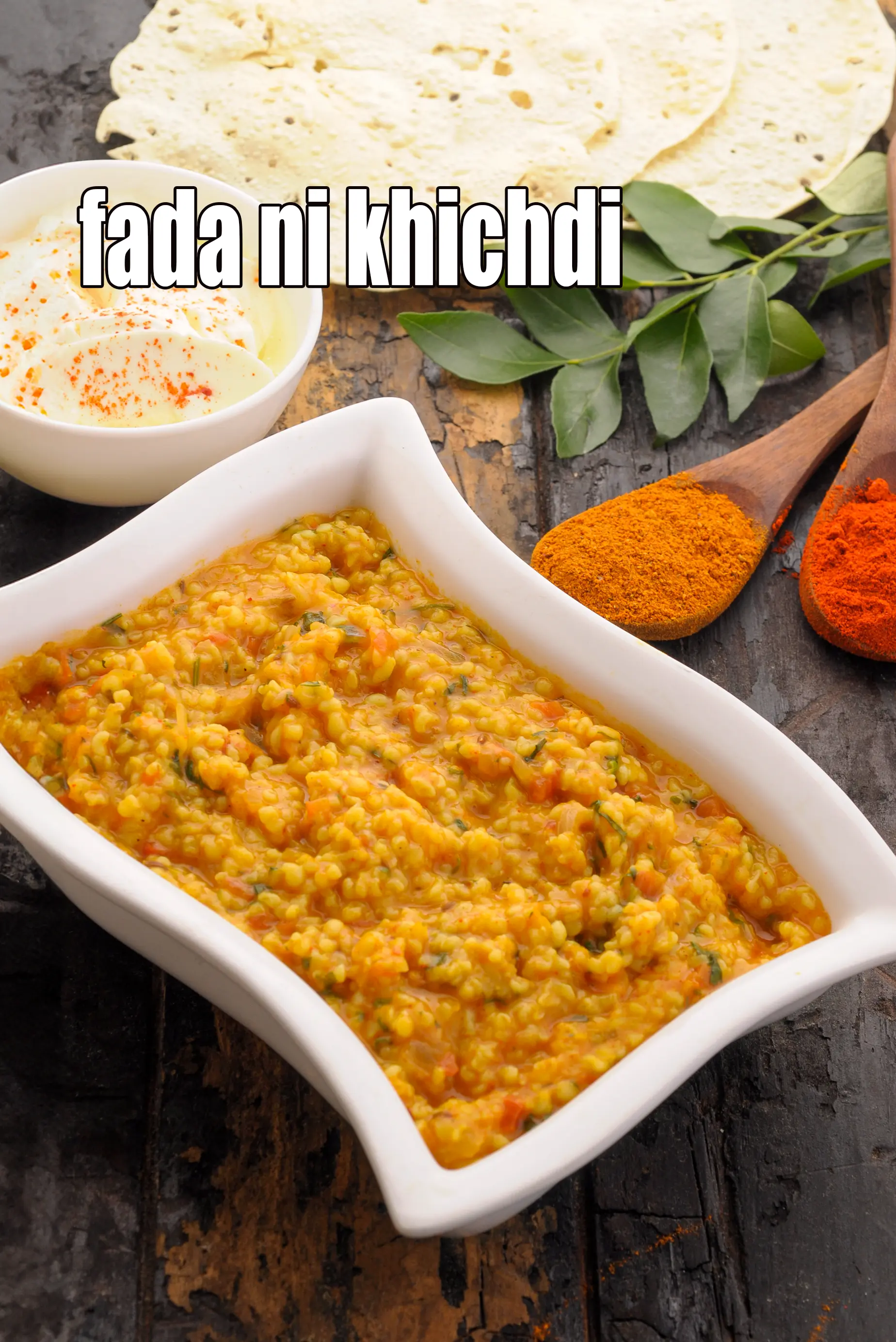
Click here to view Fada Ni Khichdi ( Gujarati Recipe)
Calories in other related recipes
